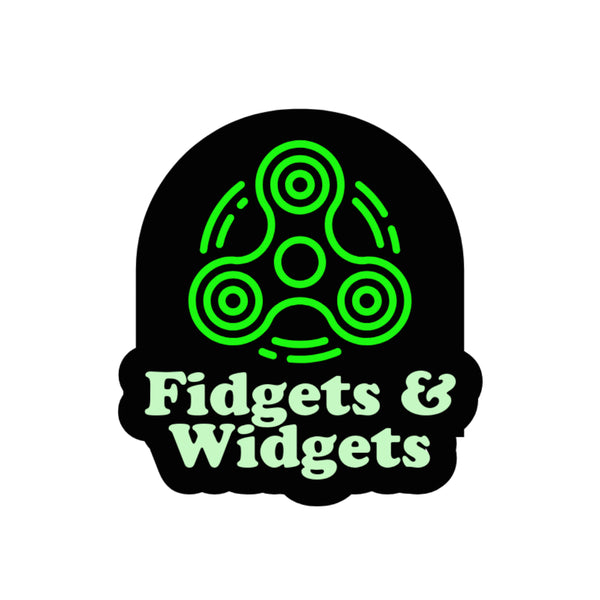
How Cognitive Focus Devices Can Support Children During Hospital Stays
Share
Being in hospital is never easy for a child. It can be loud, bright, unfamiliar and scary. For parents, watching your child feel anxious or overwhelmed in that environment can be just as difficult. That’s why sensory support tools like Cognitive Focus Devices (CFDs) are becoming increasingly recognised as valuable aids in paediatric care settings.
CFDs are specially designed, often silent tactile tools that children can manipulate with their hands. They offer a way to redirect anxious energy, improve emotional regulation, and even reduce perceived pain or discomfort. They are far more than just toys, they are sensory support devices grounded in psychology, neuroscience and occupational therapy.
Why Hospital Environments Can Be So Challenging for Children
Hospitals are full of unpredictable stimuli: the hum of machines, unfamiliar smells, people coming in and out, bright overhead lighting and long periods of waiting. For children, particularly those who are neurodivergent or who experience sensory sensitivity, this can be overwhelming.
A study by Coyne (2006) highlights that children often feel disempowered and anxious in hospital settings, especially when they do not understand what is happening around them. Emotional and behavioural responses can include withdrawal, agitation, meltdowns or shutdowns.
The Role of Sensory Tools in Paediatric Care
Cognitive Focus Devices can offer a form of sensory scaffolding that helps children regain a sense of stability. By engaging their tactile senses in a soothing, repetitive way, CFDs allow children to focus their attention and calm their nervous system.
Research from the Journal of Pediatric Nursing (Silva et al., 2020) suggests that sensory play and fidget tools are beneficial for reducing anxiety in medical settings, especially for children with Autism Spectrum Disorder. These tools provide sensory regulation that is both accessible and non-intrusive.
In a 2021 pilot study, children using sensory tools during blood draws and other minor procedures reported lower levels of pain and anxiety (Birnie et al., 2021). The children were able to focus on the tactile experience rather than the medical procedure, reducing emotional distress.
Key Benefits of CFDs for Children in Hospital
1. Emotional regulation during stressful procedures
CFDs give children something familiar and manageable to focus on during times of high stress, such as blood tests or injections.
2. A sense of control
Hospital stays can feel like a loss of autonomy. Having a small personal item that they control (something they can twist, stretch or click) can restore a sense of agency.
3. Support for neurodivergent children
For children with ADHD, autism, sensory processing disorder or anxiety, CFDs act as a calming tool to prevent overwhelm and help avoid shutdowns or meltdowns.
4. Silent and non-disruptive
Unlike some toys, CFDs are designed to be quiet. This means they are appropriate for shared spaces like waiting rooms, hospital wards or even during medical procedures.
5. Portable and hygienic
The devices I create at Fidgets & Widgets are 3d-printed in plant-based PLA and can be easily cleaned between uses, making them safe for healthcare environments.
Not Just for Hospitals
Once parents see how effective CFDs are in high-stress environments like hospitals, they often begin using them in day-to-day life as well. They can be carried to school, used in the car, or brought out during transitions and difficult moments. They’re not just for children who are neurodivergent; they’re useful for any child who finds the world a bit too fast, noisy or unpredictable sometimes.
Final Thoughts
As a designer, a parent and a neurodivergent adult myself, I have seen how powerful Cognitive Focus Devices can be. They are not about distraction for the sake of it. They are about giving children the tools to manage stress, build resilience and stay emotionally grounded, even when life feels scary.
If your child has a hospital visit coming up, or if you work with young people in medical or therapeutic settings, I would be more than happy to talk to you about the right kind of CFD for your needs.
You can explore my range of sustainable focus devices at www.fidgetsandwidgets.co.uk, or email me at info@fidgetsandwidgets.co.uk for custom recommendations.
References
-
Coyne, I. (2006). Children’s experiences of hospitalization. Journal of Child Health Care, 10(4), 326–336.
-
Silva, L.M., Schalock, M., & Gabrielsen, K. (2020). Reducing stress in hospitalised children with autism using sensory interventions. Journal of Pediatric Nursing, 52, e48–e54.
-
Birnie, K.A., et al. (2021). Pilot evaluation of a multi-sensory intervention to reduce procedural pain and anxiety in children. Canadian Journal of Pain, 5(1), 40–50.
